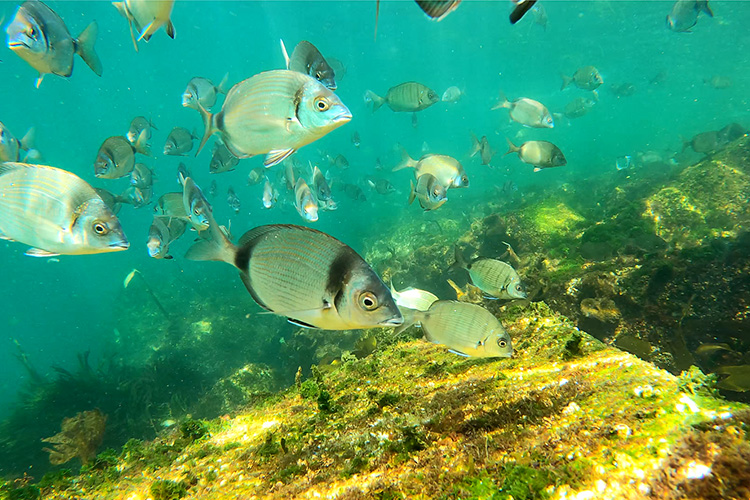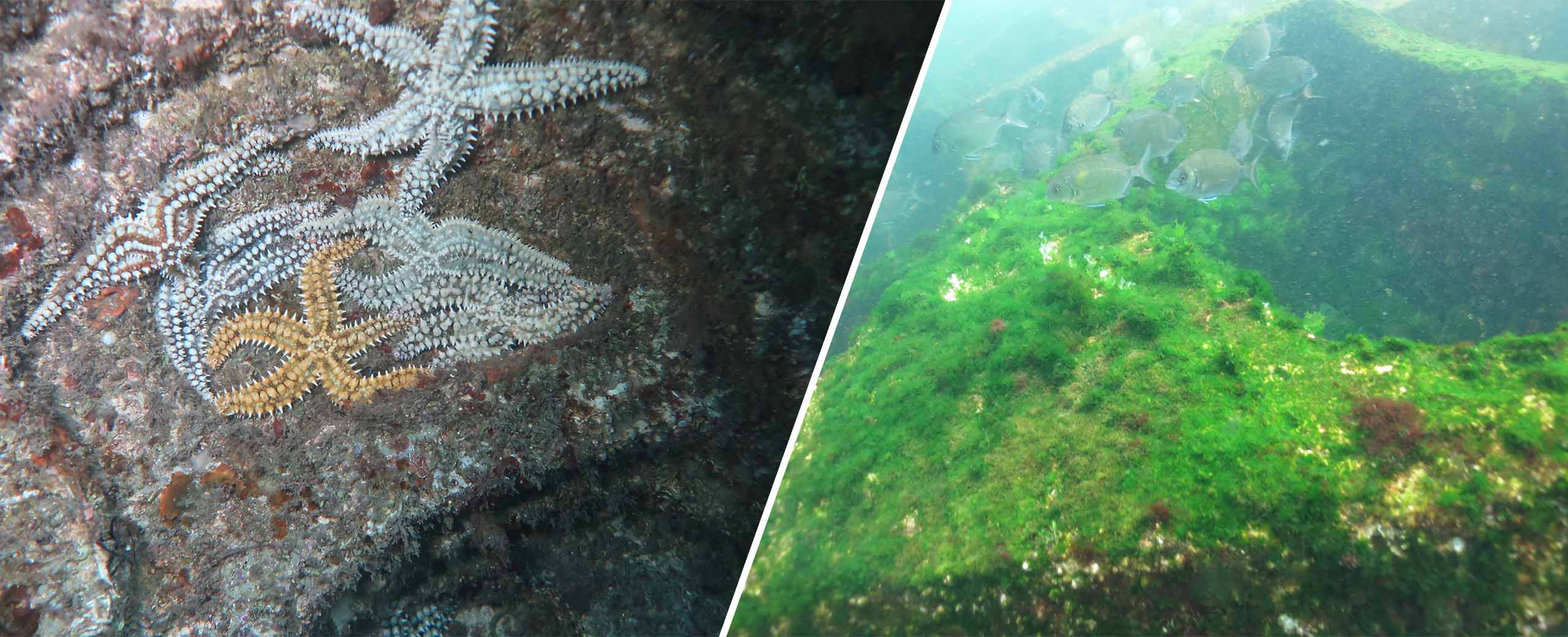The Global Biodiversity Framework (GBF) has emerged as a roadmap for global conservation efforts. With 23 ambitious targets, the GBF emphasizes integrated management, ecosystem restoration, and resilience against climate change. Checking in on our progress toward the ocean and ecological goals set for 6 years time is essential – are we on track for the protection of 30% of our oceans, and the restoration of 30% of degraded ecosystems by 2030?
At ECOncrete, we’re focusing on several strategic priorities to turn the goals in the Framework into action:
- Prioritize marine biodiversity in policy discussions and national action plans.
- Create opportunities to promote marine biodiversity at scale in the design of offshore wind infrastructure.
- Strengthen coastal resilience with biodiversity in waterfront and shoreline projects.
- Develop standardized metrics to assess marine biodiversity impacts and ecosystem health.
ECOncrete’s Contribution to Marine and Coastal Biodiversity
ECOncrete’s technology offers a unique solution to several of the GBF’s targets related to marine and coastal ecosystems. By ecologically enhancing the design and functionality of marine infrastructure, ECOncrete helps bridge the gap between engineering and ecological stewardship.
How ECOncrete Supports GBF Targets
GBF Target 1: Planning and Managing Areas to Reduce Biodiversity Loss
ECOncrete’s technology integrates nature-inclusive design (NID) into marine infrastructure. This approach not only strengthens infrastructure but also supports the creation of rich, biodiverse habitats within managed areas. By incorporating ecological principles, ECOncrete contributes to more effective spatial planning and management, helping to preserve areas of high biodiversity importance.
GBF Target 2: Restoring Degraded Ecosystems
ECOncrete plays a crucial role in restoring marine and coastal ecosystems. Its technology enhances the ecological value of artificial structures by promoting the growth of marine organisms. This restoration capability supports the GBF’s goal of restoring 30% of degraded ecosystems by 2030, improving overall biodiversity and ecosystem functions.
GBF Target 8: Minimizing Climate Change Impacts and Building Resilience
The technology developed by ECOncrete helps mitigate climate change impacts through carbon sequestration and enhancing the resilience of coastal structures. By integrating features that support marine life and improve water quality, ECOncrete contributes to building adaptive capacity in coastal ecosystems, aligning with efforts to reduce climate change effects on biodiversity.

Fish feed off of marine life growing on the ECOncrete Coastalock Single Layer Interlocking Coastal Protection System installed at the Bouzas revetment in the Living Ports Project, the Port of Vigo, Spain. Photograph by Maria Moltesen, DTU
GBF Target 11: Enhancing Nature’s Contributions to People
ECOncrete’s innovations restore and enhance ecosystem functions that benefit people, such as improving water quality, providing coastal protection, and sustaining fishery resources. These contributions are crucial for maintaining nature’s services, which include regulating air and water quality and protecting against natural hazards.
GBF Target 12: Enhancing Green Spaces and Urban Planning
While ECOncrete primarily focuses on marine environments, its technology supports the broader goal of enhancing green and blue spaces. By integrating biodiversity-enhancing features into coastal and waterfront projects, ECOncrete helps create accessible, high-quality urban spaces that benefit both human communities and natural ecosystems.
GBF Target 14: Integrating Biodiversity in Decision-Making
ECOncrete exemplifies how ecological considerations can be integrated into infrastructure development. The company’s approach demonstrates a commitment to incorporating biodiversity into engineering and design processes, aligning with the GBF’s goal of integrating biodiversity into all levels of decision-making.
GBF Target 15: Business Accountability for Biodiversity
ECOncrete sets a benchmark for businesses to assess and disclose their biodiversity-related impacts. By transparently showcasing the ecological benefits of its technology, ECOncrete encourages sustainable practices and supports efforts to reduce negative impacts on biodiversity.
The Global Biodiversity Framework (GBF) has gained traction as a vital roadmap for conservation efforts worldwide, signaling a shift in the fields of engineering and construction, particularly concerning marine and coastal infrastructure. More stakeholders and regulators in coastal and offshore regions are increasingly attentive to the implications of the GBF, advocating for policies that promote sustainable practices.
In this context, integrating nature-inclusive designs into infrastructure development is not just a forward-thinking approach but an essential strategy for fostering resilient ecosystems and sustainable communities. Solutions like ECOncrete exemplify how the construction industry can engage with biodiversity, paving the way for a healthier planet and a more sustainable future for all.
More about ECOncrete:
Planning Infrastructure as Habitat for Biodiversity
White Paper: Achieving Biodiversity Uplift on Marine Infrastructure
See a selection of case-studies in our website projects section >>
PHYSICAL EVALUATION OF THE HYDRODYNAMIC STABILITY OF AN ECO-ENGINEERED ARMOURING UNIT
Eco-engineering for Climate Change—Floating to the Future
The Design, Production and Validation of the Biological and Structural Performance of an Ecologically Engineered Concrete Block Mattress – A Nature Inclusive Design for Shoreline and Offshore construction
Blue Is the New Green: Eco-engineering for Climate Change
